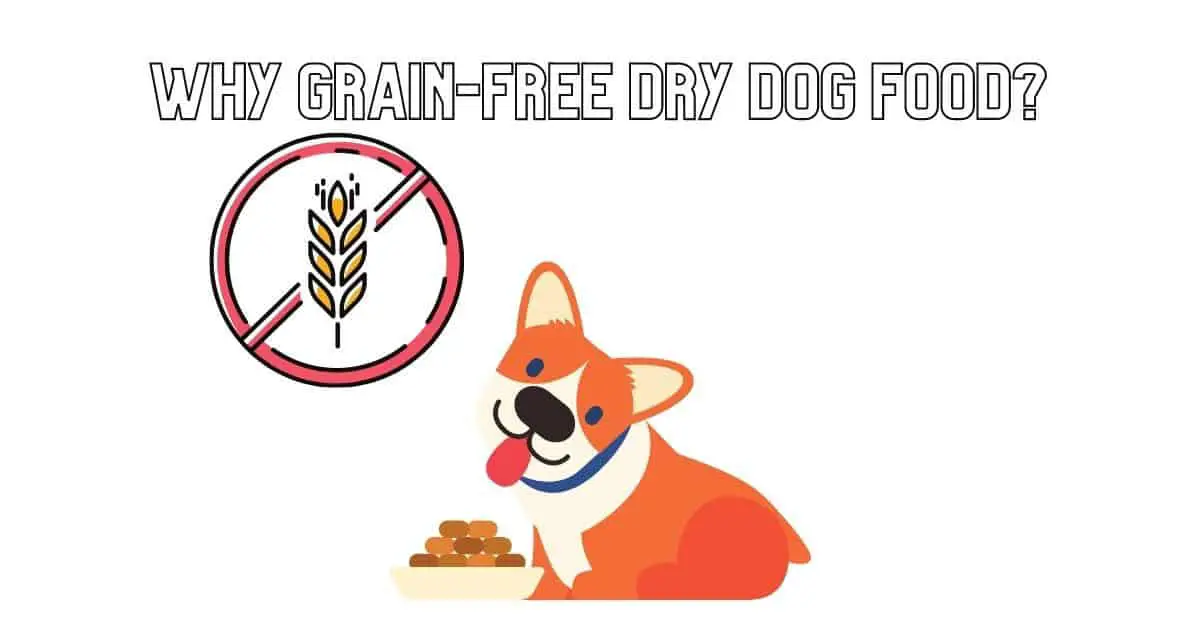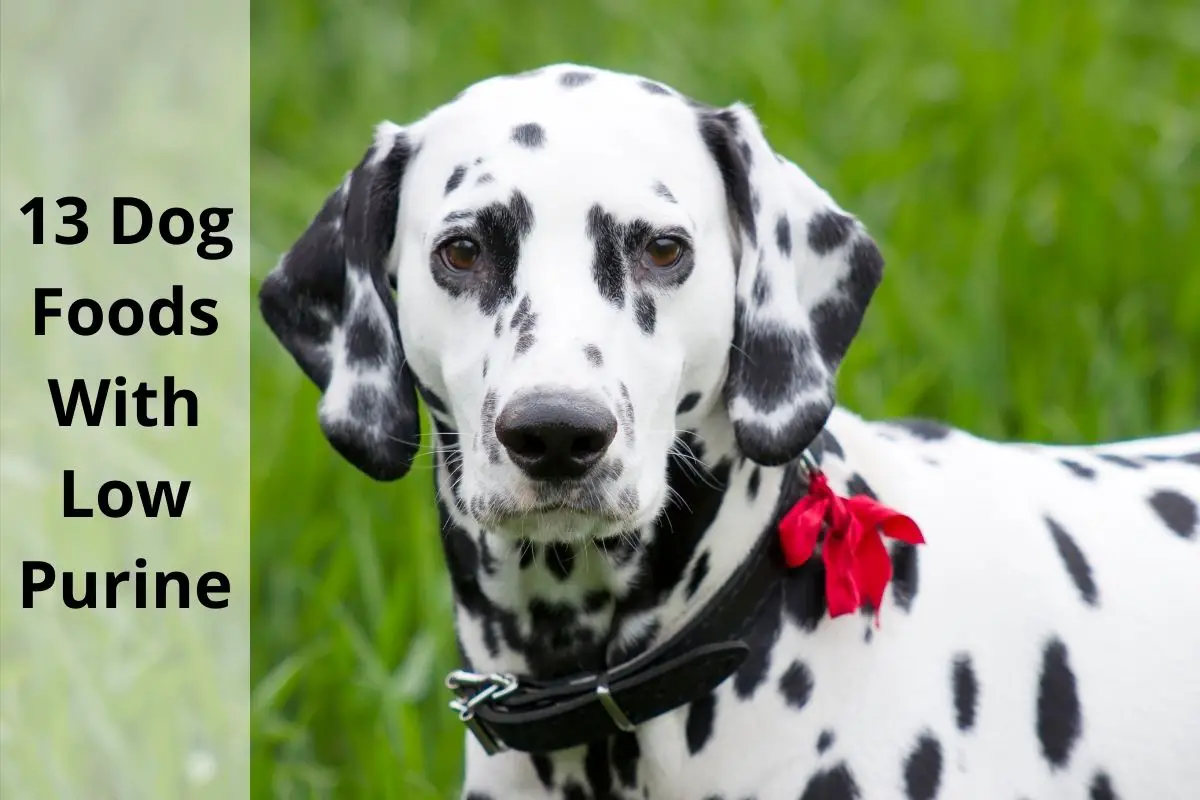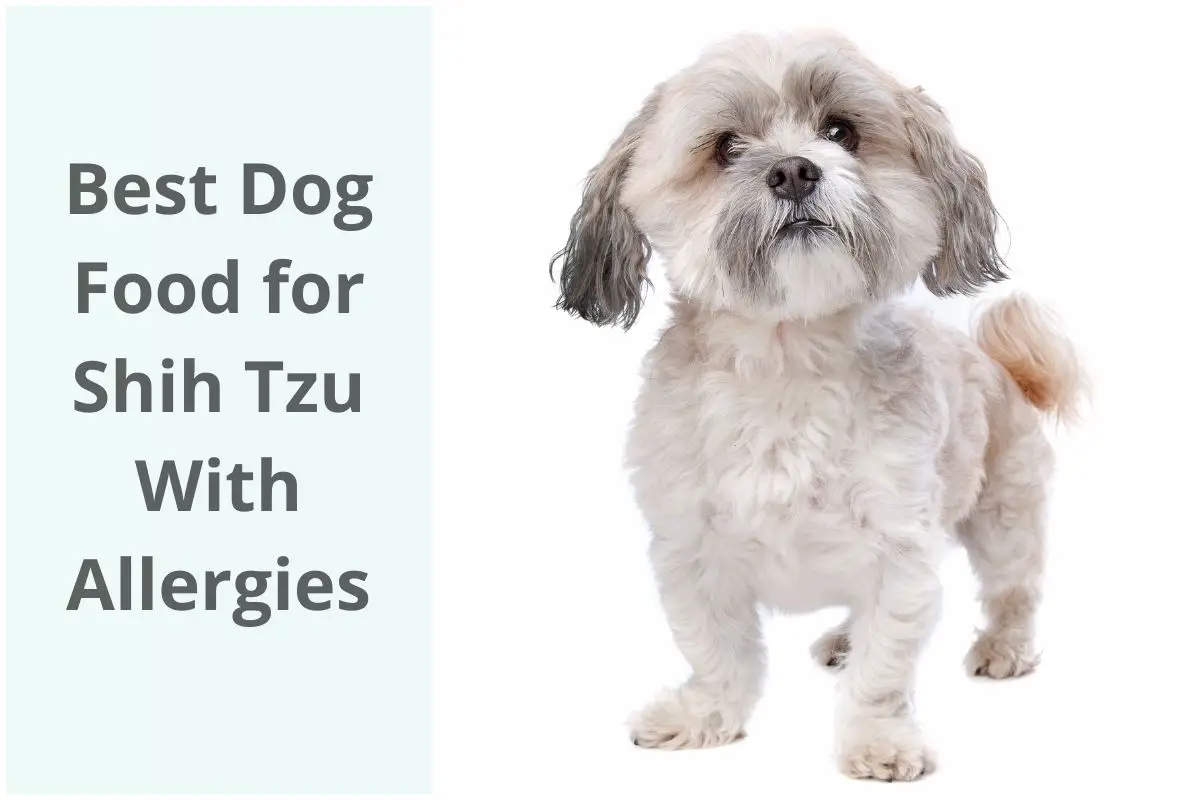This post contains affiliate links.
Having the best diet for your dog is important for their health in well-being. Like humans, dogs require specific nutrients to maintain high levels of energy and to avoid weight gain from eating foods that are high in calories but don’t provide much substance. Grain-free dog food is oftentimes the desired label for those looking for food for their pup, but is it really the best for your dog?
Grain-free dry dog food can be great for pups with allergies or having trouble digesting grains. However, it’s important to remember that grain-free does not equal filler-free. In fact, many grain-free dog foods contain tapioca, which isn’t bad for dogs, but better ingredients can replace it.
If this is all news to you, or you would like more insight, we recommend sticking around and reading further. We will be going over what to look for in your dog’s food and the realities of many dog foods that have “grain-free” on the label.
Table of Contents
What Is Grain-Free Dog Food Exactly?
GraIn free dog food is a term used for food that is free from grains such as rice and oats. The idea is that instead of grains filling up the ingredient list, which are considered “cheap filler,” often, your dog is getting more protein from meats and necessary nutrients from veggies such as potatoes and dark leafy greens.
Different dogs will need different diets, whether it’s because they are allergic to certain ingredients or have sensitive stomachs. Pet parents won’t know immediately what their dog can and can’t have, and so it is largely a trial and error process with the advice given by your vet.
However, the food industry can be quite sneaky, and it is no different when it comes to your furry friend’s food.
Is Grain Free Dog Food the Best?
To understand what makes the “best” dog food generally, we need to understand dogs’ nutritional needs in general.
It’s very important to remember that dogs are omnivores, meaning they need both meat and plants. This contrasts with their ancestors, wolves, who are obligate carnivores and survive entirely on meat. Despite the two species being similar in many ways, their diets are different.
Dogs need six different types of nutrients to thrive:
- Fats
- Carbohydrates
- Vitamins
- Minerals
- Protein
- Water
If this sounds a lot like a human diet, it’s because it sort of is. Although the overall balance will be different for dogs versus humans, they still need a balance and don’t live off of straight-up meat.
With this in mind, we can discuss the ins and outs of grain-free dog food and what dogs can thrive off of it.
The Truth About Grain Free Dog Food
The word “grain” is a dirty word for a lot of dog owners out there; the reason for that is because dog food companies have to appeal to you, the person buying food for their dog, and thus they come up with sly ways to market their product.
While they don’t outright say it, the notion that grains are cheap filler caught on in many consumers’ minds, likely due to the “grain-free” label existing in the first place. Remember, a lot of people think that dogs are borderline carnivores.
But the truth is that grain-free dog food does not indicate the quality of the product. Grains are simply one type of ingredient that can be replaced with anything else, such as tapioca, which in most cases is worse than simply having oats and brown rice as part of the ingredient list.
However, dog foods are grain-free and top-shelf stuff, such as Orijen, but this is just an example, not the rule. The same company also has a sister brand known as Acana that has a product line that blatantly advertises that it has wholesome grains on the bag.
This is an important example because Acana is a high-end dog food brand that knows its stuff; if grains were indeed filler that shouldn’t be in dog foods, it surely wouldn’t be in this brand’s food.
Are Grains Good or Bad for Dogs?
Grains can be a great part of a dog’s diet; they are cheap but not filler. Think of the foods nutritionists encourage humans to eat: brown rice, oats, barley, etc. Dogs can also benefit from these as they are packed with nutrients such as fiber and vitamins.
But it’s important to remember that too much of a good thing eventually turns bad because grains are so cheap, some dog foods will simply contain too much of it, which doesn’t provide as balanced a diet that a dog needs to stay energized and full in-between meals. Too much carbohydrates for dogs can lead to excess hunger and obesity and thus that’s why we stress choosing a dog food that is nutritionally balanced.
Are There Advantages to Grain Free Dog Food?
A major benefit to grain-free dog food is that it is either great for dogs who are allergic to the various grains found in dry dog food, or you simply would rather not find out the hard way.
As for the health benefits, quality grain-free dog food usually contains lots of protein, which many dogs can thrive off of provided that their stomachs can handle it. In addition, they tend to be very nutrient dense with various meats and healthy veggies and fruits. You find much in the way of something being added to simply bulk up the item’s quantity, like lower quality dog food.
But as we mentioned above, grain-free does not automatically mean it is the best for your dog.
Grains are not the only cheap ingredient added in mass to bulk up the calorie count. Starches such as tapioca and potatoes can be found in cheap “grain-free” food, which can almost be considered empty calories. When people think of “grain-free,” they typically envision dog food with an enormous amount of meat content with some nutritionally dense veggies, but this is sadly not the case.
What Should You Look for in a Grain-Free Dry Dog Food?
For dry dog food, the first ingredient should always be meat. Not meat-by-product or any other form of animal product, just meat. You don’t have to buy the most luxurious dog food out there to get this; even affordable dog food brands generally get this right. There are some exceptions, however. Some of Acana’s recipes contain chicken meal as the first ingredient, but if it’s bargain dog food, there is a good chance it’s not going to be great for your dog.
The following ingredients can contain meat meal, veggies such as peas, and animal products such as hearts and kidneys; it doesn’t sound great, but there are many essential nutrients packed into these ingredients, and your dog will love the food regardless.
Have a read of Acana’s Grain Free Adult Dog Food ingredients list for a good example of a quality grain-free dog food.
All of the ingredients serve a purpose, and it is a very nutritious dry dog food overall that contains healthy meats and animal products and veggies and fruits. Your dog won’t be starving 3 hours later and need excessive bathroom breaks like bottom-of-the-barrel food can cause.
Is Pricier Grain Free Dog Food Worth It?
We hear you, Acana, and other brands such as Wellness are pricier than the average dry dog food. And you might be wondering if it is worth the added cost.
What you are paying for is the ingredients at the end of the day. Brands known for providing better-than-average ingredients will provide peace of mind for dog owners and are guaranteed positive results. Your dog doesn’t have a sensitive stomach and needs a specific diet.
It’s worth mentioning that quality grain-free dog food is usually more expensive than one that includes grains. They are substituting grains with pricier ingredients and aren’t replacing them with a boatload of starches.
But don’t think you need to spend an arm and a leg to get a great grain-free diet for your pup; some of the most popular brands make well-balanced dog food at affordable prices, such as Taste of the Wild and Diamond.
Examples of Good Grain-Free Dry Dog Food
Before wrapping this up, we thought we’d give some examples of grain-free dry dog food that are both affordable and great for dogs. They may not be AS high-end as Acana and Orijen, but they get the job done, and your dog will probably love it!
We would also encourage you to watch this video below if you’d like a larger list of recommendations:
Taste of the Wild High Prairie Grain-Free Dog Food
Taste of the Wild is a dog food company that keeps its heads down and works on creating excellent dog food. No fancy marketing, no jingles, and no brand tax. They simply make great food and sell it. The result is high-quality dog food at a modest price point.
This specific recipe consists of various meats such as water buffalo, bison, and venison and a slew of healthy veggies and fruits. You’ll find sweet potato as a starch included in the ingredients, but sweet potatoes are good for dogs and more nutritionally dense than regular ones. They support a healthy digestive system due to their fiber content and provide vitamins such as C, B6, and A.
Diamond Naturals Grain-Free Premium Dry Dog Food
This is in line with the above mention regarding nutritional balance and quality ingredients. The pricing is slightly cheaper too, and so if you’d prefer to stay around the $40 mark for 28 pounds worth of dog food, then this is a great grain-free option!
Meat and sweet potato are the highlight ingredients as stated on the bag. We said above, sweet potatoes are a good ingredient to have and provide a nice balance of affordability while not falling under the “filler” category. This is perhaps a major difference between the top-end brands and more modestly priced ones; sweet potato is a way to cut down on costs while maintaining nutritional balance.
Conclusion
Grain-free dog food has benefits ranging from a potentially more nutrient-dense food overall to being great for dogs with allergies or who can’t digest grains very well. However, be careful when buying food that says “grain-free” on the packaging as this does not indicate your pup is getting more meat and veggies by default; rather, it can potentially replace grains for lots of starchy fillers.
Sources
- Vital Essentials: Should Your Dog be on a Grain-Free Diet?
- Purina: Is Grain Good for Dogs?
- RedBarn: Grain or Grain-Free: Which Food is Best for my Dog?
Mrdogfood.com is a participant in the Amazon Services LLC Associates Program, an affiliate advertising program designed to provide a means for sites to earn advertising fees by advertising and linking to Amazon.com. We also participate in other affiliate programs which compensate us for referring traffic.





